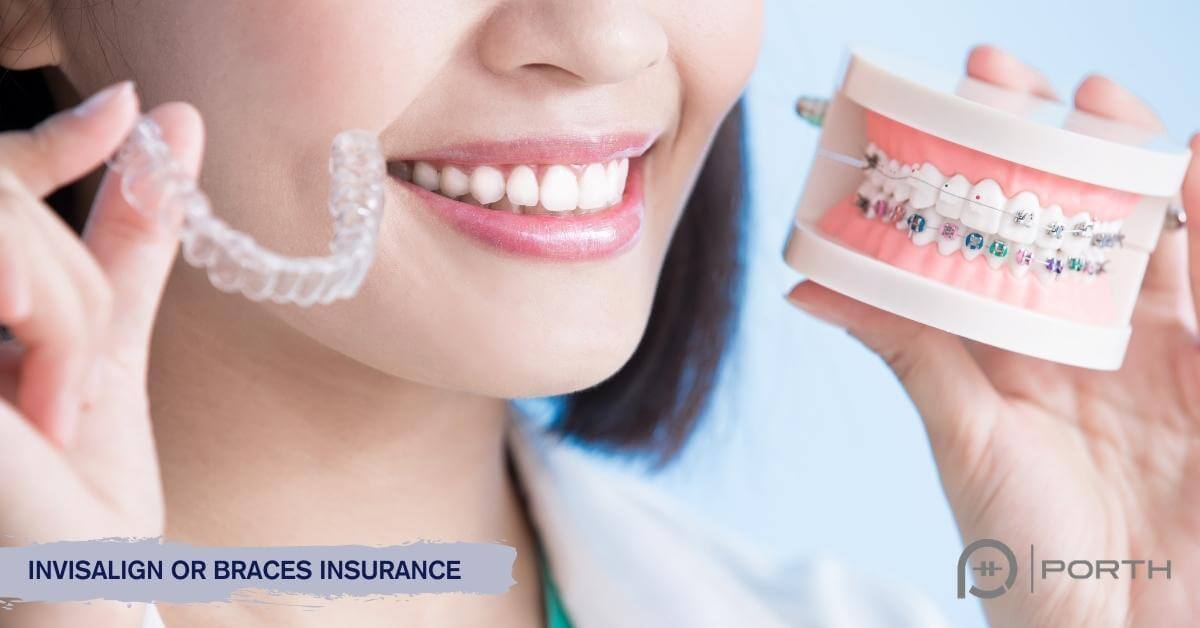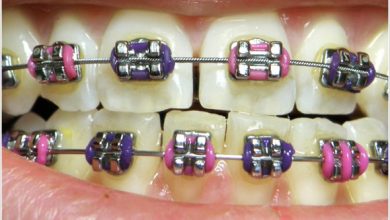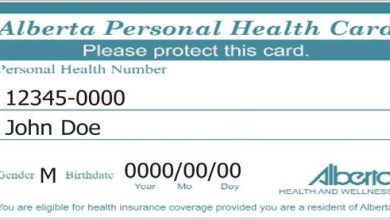Does Dental Cover Braces?

Yes, dental insurance typically covers braces as part of orthodontic treatment. Orthodontic treatment, including braces, is typically covered by dental insurance policies.
These policies often include coverage for necessary orthodontic procedures to correct misalignment of teeth and jaws. Braces are commonly used to straighten teeth, improve biting and chewing, and enhance overall dental health. However, it’s important to review the specific terms and conditions of your dental insurance plan, as coverage may vary.
Some plans may have limitations on age, coverage maximums, waiting periods, or other restrictions. Consulting with your dentist or orthodontist and your dental insurance provider will help you determine if your plan covers braces and what costs you may be responsible for.
What Is Dental Insurance Coverage?
`htmlDental insurance coverage is a type of insurance policy that helps cover the costs of dental care and treatments. It typically includes a range of dental services such as preventive care, basic procedures, and major treatments. The coverage may vary depending on the specific insurance plan.
Explanation Of Dental Insurance Coverage
Dental insurance coverage provides financial support for various dental services, including:
| Types of Dental Insurance Plans |
|---|
| 1. Preventive Care |
| 2. Basic Procedures |
| 3. Major Treatments |
These categories of coverage cater to different dental needs, from routine check-ups and cleanings to more extensive procedures like fillings, root canals, and yes, braces.
Is Dental Insurance Necessary?
Dental insurance can be beneficial as it helps offset the costs of dental treatment. However, its necessity varies depending on individual circumstances and needs. Factors such as existing dental health, expected treatment requirements, and financial considerations should be evaluated before deciding on dental insurance coverage.
Ultimately, the decision to obtain dental insurance coverage should be based on individual preferences and priorities. It is advisable to carefully review and compare different insurance plans to find the one that best suits your oral health needs and financial capabilities.
`Understanding Orthodontic Treatment
Understanding orthodontic treatment is essential for individuals who are considering braces. Orthodontic treatment refers to the process of correcting misaligned teeth and jaws, typically accomplished through the use of braces. Many people assume that braces are purely cosmetic, but they actually serve an important functional purpose. Orthodontic treatment can address a variety of common issues, such as overcrowding, spacing problems, and bite abnormalities. Braces gradually shift the teeth into proper alignment, improving both the appearance and functionality of the smile. The benefits of orthodontic treatment extend beyond aesthetics, as it can also improve oral hygiene and prevent future dental problems. While dental insurance typically covers orthodontic treatment for children, coverage for adults may vary. It is important to check with your dental insurance provider to understand the specifics of your coverage.
How Does Dental Insurance Cover Braces?
Does dental insurance cover braces? That is a commonly asked question when considering orthodontic treatment for yourself or your family. Dental insurance plans may provide coverage for braces, but it is important to understand the specifics of your plan.
Most dental insurance plans offer some level of coverage for braces, but the extent of coverage can vary. In general, the coverage includes a percentage of the cost, up to a specified maximum. The percentage may be lower for adults compared to children.
It is crucial to review the inclusions and exclusions of your dental insurance plan to determine what is covered related to braces. Some plans may have specific limitations, waiting periods, or age restrictions. Pre-authorization from the insurance company is often required before beginning orthodontic treatment. This process ensures that the treatment is necessary and covered by the plan.
Overall, dental insurance can help offset the cost of braces, but it is essential to understand the details of your specific plan. Contact your insurance provider to discuss coverage options and to clarify any questions or concerns you may have.
Different Types Of Dental Insurance Plans
There are different types of dental insurance plans that offer coverage for braces. One such type is the PPO dental insurance plans, which provide a network of preferred providers. With PPO plans, individuals have the freedom to choose their dentist, including orthodontists who can provide braces. Another type is HMO dental insurance plans, which usually have lower premiums but limited provider choices. However, some HMO plans may cover orthodontic treatments such as braces. Indemnity dental insurance plans, on the other hand, typically offer the most flexibility in provider choice but may have higher out-of-pocket costs. Lastly, there are discount dental plans that offer reduced fees for dental services, including braces, for members who visit participating providers. It’s important to carefully review the specifics of each dental insurance plan to determine if they cover braces and to understand any limitations or requirements for coverage.
Factors Affecting Dental Coverage For Braces
When considering dental coverage for braces, it is important to be aware of several factors that can affect your coverage. One important factor to consider is age limitations for coverage. Some insurance plans may only provide coverage for braces to individuals within a certain age range. It’s crucial to check the specific guidelines of your dental insurance plan to determine if there are any age restrictions.
Exceptions and special cases are another factor to consider. In certain situations, such as severe misalignment or a medical need, insurance plans might provide coverage for braces even if the individual does not meet the typical eligibility criteria.
Secondary insurance coverage options might also come into play when it comes to braces. If your primary dental insurance does not fully cover the cost of braces, you may have the option to explore secondary insurance or dental discount plans to help offset the expenses.
Lastly, pre-existing conditions can impact dental coverage for braces. Some insurance plans might not cover orthodontic treatment for pre-existing conditions, so it’s crucial to clarify this with your insurance provider before pursuing braces.

Credit: porth.io
Steps To Maximize Dental Coverage For Braces
html| Steps to maximize dental coverage for braces |
|---|
| Finding the right dental insurance plan can significantly impact the coverage you receive for braces. It’s important to carefully review the details of each plan to understand the extent of coverage provided. Look for plans that explicitly mention coverage for orthodontic treatment, including braces. |
| Once you have chosen a plan, it is essential to obtain pre-authorization before starting any orthodontic treatment. This step ensures that you meet the necessary eligibility criteria and avoids any surprises or denials of coverage later on. |
| Utilizing your orthodontic benefits effectively can also help maximize coverage for braces. Some insurance plans have limitations on the duration of coverage or may require specific documentation. Be proactive in understanding these requirements and providing the necessary information to your dentist or orthodontist. Additionally, ask your dental provider for cost estimates before proceeding with any treatment to avoid unforeseen expenses. |
Alternatives To Dental Insurance For Braces
When it comes to dental insurance coverage for braces, it is important to note that not all plans include orthodontic treatment. However, there are alternatives available for individuals seeking financial assistance for orthodontic care.
Flexible Spending Accounts (FSAs) are a great option for those who have access to them. These accounts allow you to set aside pre-tax dollars to be used for qualified medical expenses, including braces. FSAs typically have a contribution limit, so it is important to plan accordingly.
Health Savings Accounts (HSAs) can also be used to cover the cost of braces. Similar to FSAs, HSAs allow you to set aside pre-tax money for medical expenses. However, HSAs are only available to individuals with high-deductible health insurance plans.
Orthodontists often offer payment plans to help make orthodontic treatment more affordable. These plans allow you to spread out the cost over a period of time, making payments more manageable.
Additionally, there are discount programs available specifically for braces. These programs typically offer reduced fees for orthodontic treatment and can be a cost-effective option for those without dental insurance coverage.
Tips For Navigating Dental Coverage For Braces
Understanding the terminology: When it comes to dental coverage for braces, it’s important to be familiar with the terminology used by insurance providers. Terms like co-payments, deductibles, and maximum annual coverage can greatly impact your out-of-pocket expenses.
Asking the right questions to the insurance provider: It is essential to inquire about specific details regarding the coverage of braces. Ask about any waiting periods, pre-authorization requirements, and whether the coverage applies to orthodontic treatment for both adults and children.
Keeping track of orthodontic expenses: To ensure optimal coverage, it is recommended to keep a record of all orthodontic expenses. This includes bills for consultation, X-rays, braces, adjustments, and any other related costs. Maintaining thorough documentation can help when filing claims.
Seeking professional advice for optimal coverage: Consulting with a dental professional or an orthodontist can provide valuable insights on navigating dental coverage for braces. They can help determine the most suitable treatment options based on your insurance coverage, as well as provide guidance on maximizing benefits.
Frequently Asked Questions On Does Dental Cover Braces?
Does Dental Include Braces?
Yes, dental can cover braces.
What Is The Insurance For Braces Called?
The insurance for braces is commonly referred to as orthodontic insurance. It helps cover the cost of braces and related treatments.
Are Braces Free For?
No, braces are not free for everyone. The cost of braces depends on various factors like type of braces, insurance coverage, and the specific dental clinic.
Are Braces Medically Necessary?
Yes, braces are medically necessary to correct dental issues and improve oral health. They help realign teeth, fix overcrowding, and correct bites, preventing future problems like tooth decay and gum disease.
Conclusion
To sum it up, dental coverage for braces will depend on your insurance plan. It’s important to review the specifics of your policy and consult with your insurer to understand what is covered and what is not. Remember to consider factors such as age restrictions, waiting periods, and maximum benefit limits.
By gathering all the necessary information, you can make an informed decision about your orthodontic needs.





